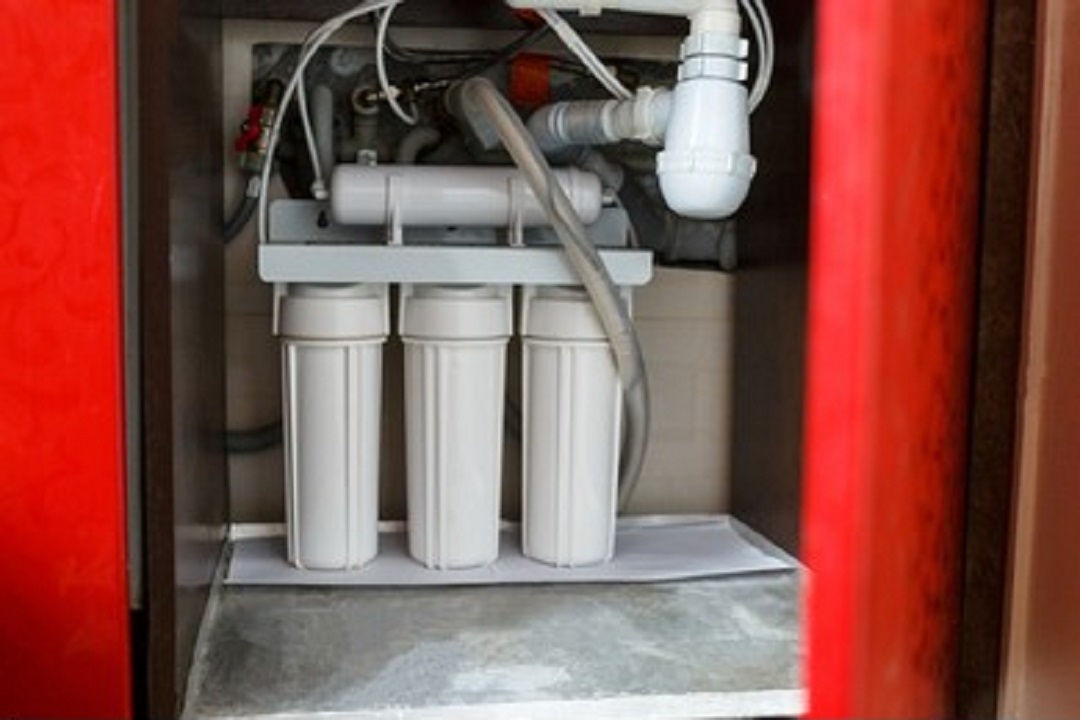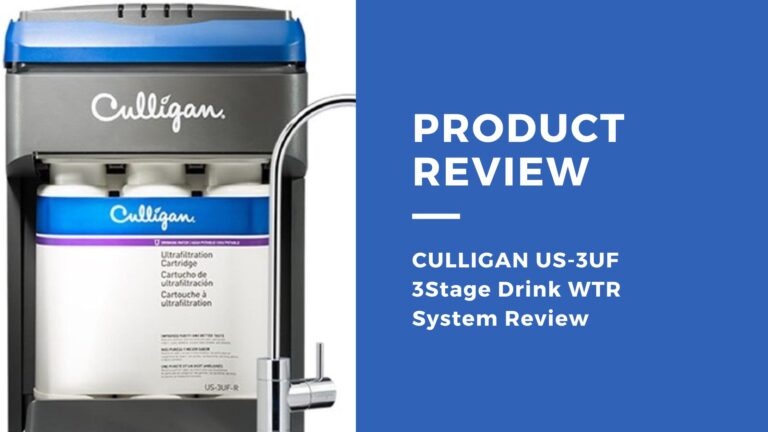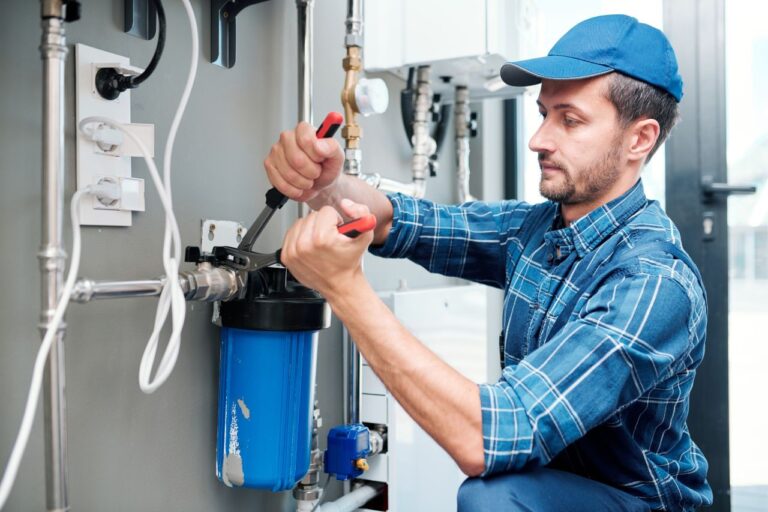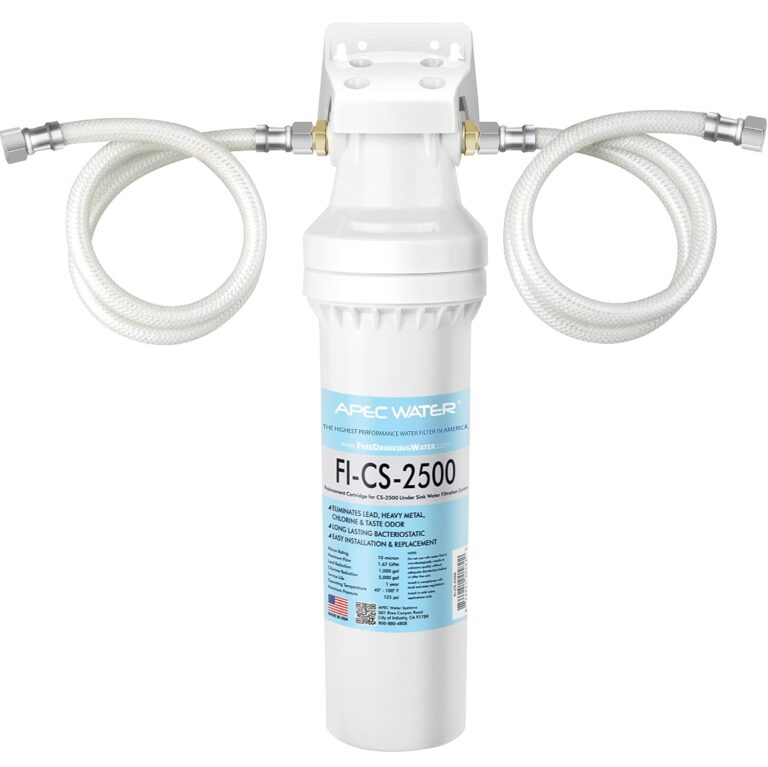Understanding Under Sink Ultrafiltration
Under sink ultrafiltration systems are a convenient and cost-effective way to clean your drinking water and get rid of contaminants. They can provide safe and healthy drinking water for your family, while also reducing pollutant levels that can be harmful to humans or the environment. Learn more about how these products work, their benefits, and the key features to look for when selecting an under sink ultrafiltration system.
What is Under Sink Ultrafiltration?
Under sink ultrafiltration systems provide on-demand treatment of drinking water. They attach directly to your cold water line, typically located under your kitchen sink, and then filter incoming water before it reaches the tap. These systems will remove chlorine, asbestos, lead, pharmaceuticals, and certain other pollutants from the water but will not affect the natural minerals and salts that are beneficial for you.
Under sink ultrafiltration systems use a replaceable cartridge to trap and remove small particles from your drinking water, resulting in clean and healthy water free of pollutants. The system has an LED display that lets you know when it is time to change the filter cartridge and a simple push button control panel for easy operation. Installing this system under your kitchen sink is relatively easy and will give you peace of mind knowing that all the water coming out of the faucet is safe for consumption.
Benefits of an Ultrafiltration System
An under sink ultrafiltration system offers convenient and efficient water treatment. These systems provide an unlimited supply of safe, clean drinking water that tastes delicious and is free of harmful particulates and chemicals. Compared with other filters, they don’t require frequent replacement, making them more cost-effective and less maintenance. They’re also easy to install and can be set up within minutes.
This type of filtration system also provides a much higher level of purification than other types of water filters, such as carbon and sediment filters. Ultrafiltration systems remove more impurities from the water, such as microorganisms, dirt, chemicals, and other contaminants.
Their filtering process is more sophisticated and results in significantly cleaner and fresher drinking water than from typical filtering methods. In addition, ultrafiltration systems can filter out bacteria that carbon filters cannot. This makes them a great choice for allergy sufferers or those who are health-conscious.
Types of Ultrafiltration Systems
There are two types of ultrafiltration systems – whole-house and point-of-use systems. Whole-house systems are installed at the main water supply line and are suitable for treating all the water that comes into the house. Point-of-use (POU) systems, on the other hand, are designed specifically to treat water from a single source, such as an under sink drinking water filter or refrigerator filter. POU systems offer versatility and easy installation and can be used with multiple faucets located around your home.
POU ultrafiltration systems are ideal for homeowners who want to treat water from a single source, such as an under sink drinking water filter or refrigerator filter. While whole-house systems are typically more expensive, they often provide more comprehensive protection from contaminants and can be integrated with other filtration products such as reverse osmosis systems.
Depending on your specific needs, the best option for you will depend on the type of water supply you have, the types of contaminants present in your water, and the budget you have set aside for a water treatment system.
How to Choose the Right Under Sink Unit For You
Choosing the right under sink ultrafiltration unit for your needs can be a daunting task. First, you must determine what contaminants are present in your water supply, as this will determine which specific type of filter is most suitable.
Secondly, consider how much water you will need to filter – small units are better suited for light-duty tasks such as under sink drinking water filters, whereas larger systems may be needed for multiple faucets or residences with higher concentrations of contaminants. Finally, factor in the cost of installation and maintenance.
To make the decision-making process easier, start by researching the various ultrafiltration systems available in the market. Determine which filter components best suit your requirements and read reviews to get a better understanding of each unit’s performance.
Once you have narrowed down your selection, carefully compare specifications such as filter lifespan, rated flow rate and micron size. You can also consult with an expert if needed – they can give you advice on how to pick a unit with good long-term value. Ultimately, taking these steps will increase your chances of finding a high-quality under sink unit that fits your needs perfectly.
Maintenance and Replacement Costs
Most under sink ultrafiltration systems don’t require extensive maintenance, but they do need to be replaced when their filtering capability becomes diminished. This is typically done on a fixed schedule that can range from every 6 months to several years, depending on the type of filter you have chosen and the water quality in your area. It’s important to understand how often the system needs to be maintained or replaced in order to operate at maximum efficiency and effectiveness.
Generally, filters should be replaced according to their manufacturer’s recommendation. Also, ensure that the filter housing and inlet/outlet fittings are all backwashed on a regular schedule. This can help remove built-up debris and sediment that could damage the system or reduce its effectiveness. Additionally, many systems require a chemical sanitizing step every 6 months to help keep particulates and bacteria at bay as well. Finally, be sure to check the filter housings for signs of corrosion or wear over time and replace components as needed.







